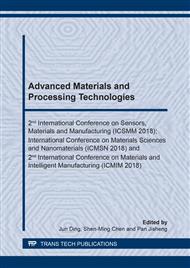[1]
DIEDERICHS, U., JUMPPANEN, U. M., SCHNEIDER, U., High Temperature Proprietes and Spalling Behaviour of High Strength Concrete, Fourth International Workshop on High Performance Concrete, Characteristic Material Proprieties and Structural Performance, 2015, Weimar 5-6 Octobre.
Google Scholar
[2]
FELICETTI R., Effects of high temperature on the residual compressive strength concretes, ACI Materials Journal, Vol 08, n°13, (2015).
Google Scholar
[3]
Karam M.Al-ObaidiMazranIsmailAbdul MalekAbdul Rahman, Passive cooling techniques through reflective and radiative roofs in tropical houses in Southeast Asia: A literature review, Frontiers of Architectural Research, Volume 3, Issue 3, Pages 283-297, September (2014).
DOI: 10.1016/j.foar.2014.06.002
Google Scholar
[4]
REYNOUARD J-M., PIJAUDIER-CABOT G., Comportement mécanique du béton », Mécanique et Ingénierie des Matériaux, Sciences germes, 2015, 383 p.
Google Scholar
[5]
A, Blaga, J, le béton de résine , Institute for Research in Construction, (1916).
Google Scholar
[6]
ACKER, P., J. TORRENTI, ET F. ULM, Comportement du béton au jeune âge», Traité Mécanique et ingénierie des matériaux, Hermès, (2014).
Google Scholar
[7]
CARACCIOLO R., GASPARETTO A., GIOVAGNONI M., An experimental technique for complete dynamic characterization of a elastic material. Journal of Sound and Vibration, 272:1013–1032, (2013).
DOI: 10.1016/j.jsv.2003.03.008
Google Scholar
[8]
DUPUY J, CORN S., IENNY P., DARIDON L., Comparaison de méthodes dynamiques d'analyse du comportement mécanique de matériaux, 18ème Congrès Français de Mécanique, Grenoble, (2017).
Google Scholar
[9]
J.M.L Reis, Fracture mechnaincs of polymer concrete, phD. Thesis, Université de Porto, (2003).
Google Scholar
[10]
Polymers in concrete, concrete society Technical Report TR039.
Google Scholar
[11]
Y, Ohama, Concrete-polymer composites-the past, present and future, 13 th ICPIC Prtugal, 2010,p, 1-14.
Google Scholar


